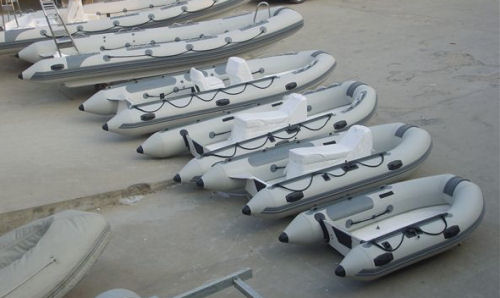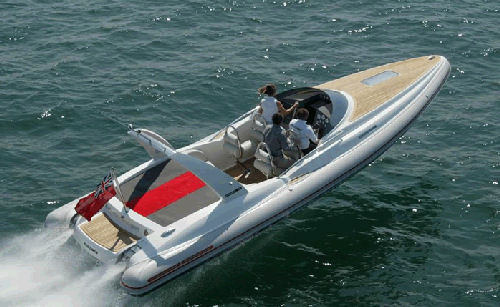How to Maintain Your Inflatable
Almost every cruising boat carries at least one tender, usually an inflatable or a RIB. Whether it lives on chocks on the boat deck, hangs on davits or rests tipped on its side or on the swim platform, a tender is both a useful and expensive accessory. A little TLC every now and then will make its life longer and happier. And it will make you feel good knowing that you showed affection for the little lady you keep on the side.

Maintaining an inflatable or a RIB is about as easy a chore as you’ll find onboard. Basically, you clean it with mild soap and fresh water after each use, rinse it thoroughly and dry it before reinstalling the floorboards, seats and other accessories. Treat the rigid parts of a RIB as you would any fiberglass boat -- wash often and wax once or twice a season to maintain the gelcoat. Novurania recommends waxing its inflatable tubes as well, once a month to protect against UV-induced oxidation, after using a hand cleaner with lanolin (the stuff mechanics swear by) to remove oil and grease stains.
Some Big No-Nos
Even though all quality inflatables are highly resistant to chemicals and oil, don’t clean them with ammonia, chlorine bleach, or strong detergents; never use silicone – or petroleum-based solvents or coatings. While petroleum won’t damage the Hypalon or PVC polymer, the residual film can attack the adhesives in glued-seam models, and/or make future repairs very difficult. Water-based 303 Protectant is a better choice for UV protection than petroleum-based Armor All, for example; it’s also good for fiberglass, so it is an ideal sunscreen for RIBs. (But the best UV barrier is a form-fitting cover, made of Sunbrella or similar fabric; it also looks very yachty.)

Even undamaged inflatables lose air, and fairly quickly at that. Most manufacturers consider a 10% loss in pressure over 24 hours to be normal, so if you have to top-up your tubes every day, don’t tear your hair out looking for a leak. That’s just the way it is. Keep the valves clear of sand, seaweed, and other junk, and you’ll minimize your pumping chores. If you need to patch a puncture, use the repair kit supplied by the manufacturer, and follow the directions exactly. Carefully clean the surface with solvent (included in the kit), especially important if you’ve used silicone, petroleum, or wax on the tubes. Work in a well-ventilated area, and don’t breathe any more of the fumes than absolutely necessary.

A Facelift for the Old Gal
Finally, if your tender is showing signs of age, you can give it a facelift and extend its lifespan by recoating it. Try SRC Tuff Coat, from Synergy Research Corporation (604-596-1000; www.tuff-coat.com). It’s basically paint-on synthetic rubber, but applied in two layers: The basecoat restores the surface of the tubes, while the topcoat provides the finish. Tuff Coat comes in five colors – gray, white, red, black, and orange. Kits are inexpensive, and if you can paint, you can apply it yourself. Contact the company for complete details and prices. Your tender will thank you.
